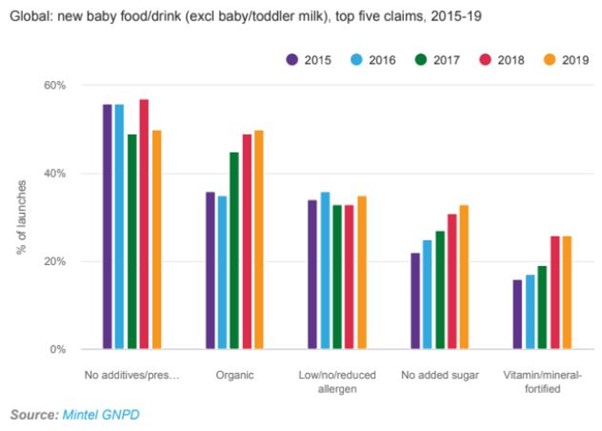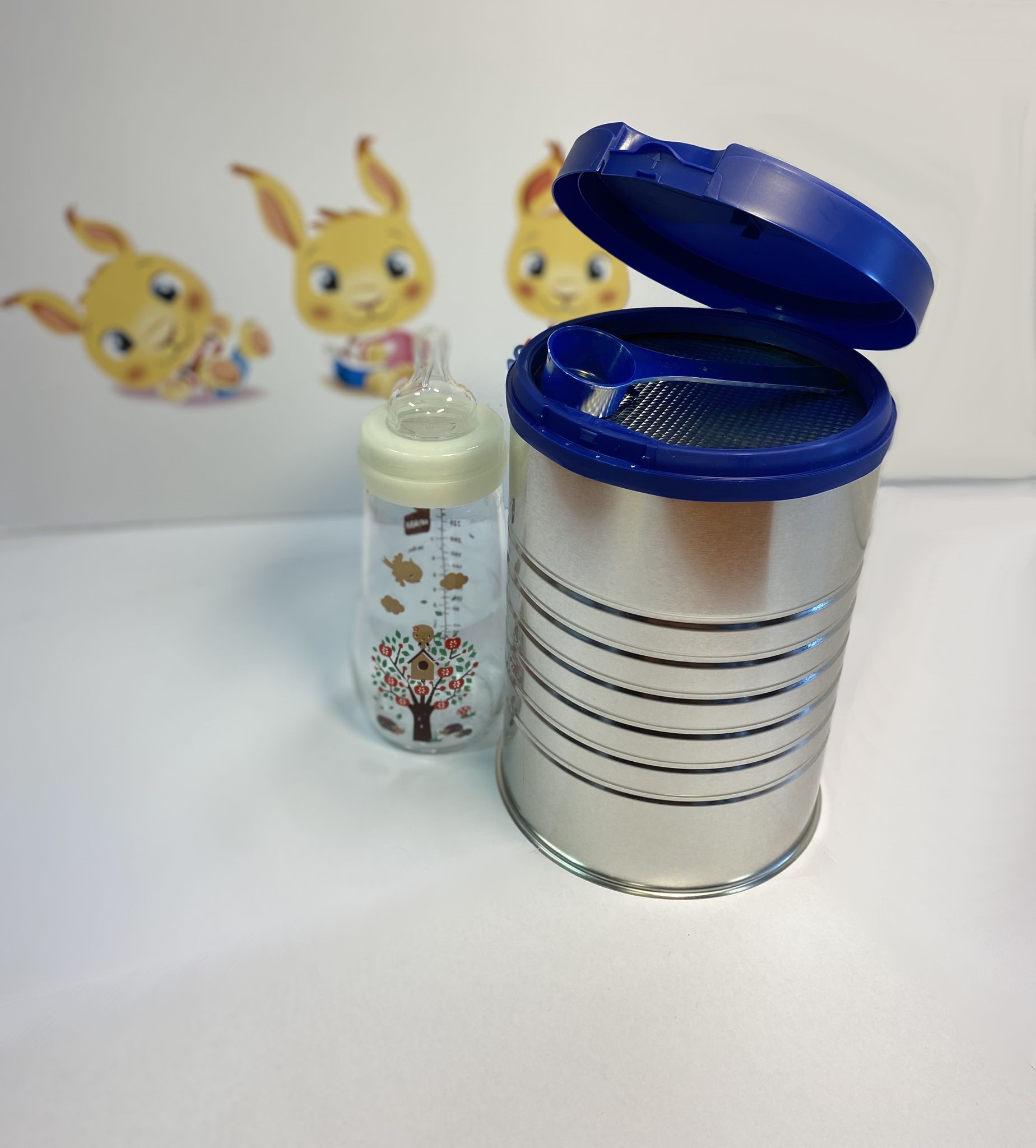Infant formulas: The keys to a tailored offer

Early life nutrition is decisive for children’s health in the short and long term. Exclusive breastfeeding is recommended for the first 6 months of life. If you cannot or do not want to breastfeed for whatever reason, the medical profession will advise you on an infant formula. This is why infant formulas can, in this case, be of interest. Infant formula manufacturers are working to improve their products to meet the specific needs of infants. Discover how infant formulas are formulated to meet infant needs, quality and regulatory requirements, and also innovate to adapt to local markets.
Nutritional composition of infant formulas
Nutrition in early life plays a key role in children’s development. In particular, nutrition in the first 1,000 days of life is decisive for growth and health in adulthood [1]. During the first months of life, the nutritional needs of infants are governed by their age.
Infant macronutrient requirements
Macronutrients (fats, carbohydrates, proteins) provide energy in the form of calories. Infants have specific needs that change rapidly. Up to 6 months old, an average energy intake of 510 Kcal/day is recommended [2] and a particular distribution of macronutrients with fats and carbohydrates in a higher proportion than proteins.[3]

Tailored micronutrient supply
Micronutrients do not play a role as an energy source, but they are essential for correct body function. This category comprises minerals, such as calcium, involved in bone mineralization [4]. It also comprises selenium, which contributes to immune system function [5], and magnesium, which regulates many physiological functions in children as regards muscles, bones and nerves [6].
As for trace elements, iron is fundamental for the transport of oxygen in the body [7] and contributes to the infant’s natural defences [8]. Other elements play important roles in children’s development, amongst which zinc, involved in different physiological processes such as immunity and cognitive functions [9]. Crucial for many enzymatic activities, copper contributes to iron transport as well as to normal energy metabolism [10].
As for vitamins, they are essential from birth, e.g. vitamins D and K which play a part in muscle and bone growth [11] and anticoagulant activity [12] respectively. Vitamin C also plays an important role in immune processes and helps strengthen defence against infections [13].
Quality and safety of infant formulas
Strict regulation of baby food
National and European bodies determine precisely the composition criteria and requirements for information on foods intended for infant nutrition (Regulation (EU) 2016/127). Provisions relating to the quality and safety of infant products are also set out in various regulations.
In addition, WHO and FAO have developed a Codex Alimentarius setting out different standards and guidelines, particularly for the formulation of infant foods (CODEX STAN 72-1981 rev. 2007).
Stringent controls on infant products
The Codex Alimentarius suggests a hygiene usage code for powdered formula for infants and young children (CAC/RCP 66-2008). In addition, the General Food Directorate is committed to overseeing control services quality and efficiency. It has introduced a National Quality Manual covering quality management procedures and approaches. Different tools and texts are available to professionals to enable them to perform quality control, specifically the different ISO standards.
Tailoring infant formulas to local markets
Infant nutrition product formulations must meet the nutritional needs of infants. However, they must also comply with the regulations in force.
Taking cultural and social aspects into consideration
Cultural relationships to breastfeeding vary from country to country. They govern the use of infant formulas in a highly specific manner.
Breastfeeding duration or the use of infant products thus differs depending on cultures, social policies and length of maternity leave.
Motivations and expectations are also country-specific. So, some people pay more attention to environmental protection or CSR (corporate social responsibility) issues. For example, they scrutinise the use of controversial ingredients such as palm oil in terms of their impact on the environment.
The appeal of new infant formula applications.
Non-nutritional benefits are beginning to be assessed. Infant formulas can be supplemented with bacteria or yeasts which could contribute to the correct functioning of immune and digestive systems in infants. Parents’ expectations also include cognitive development, with supplements of essential fatty acids such as linoleic acid (AL), linolenic α acid (ALA) and docosahexaenoic acid.
Convenient product formats
A key trend at the moment is the practicality of infant formula formats. Manufacturers must increasingly adapt to parents’ desire for autonomy and consumption on the move. In 2020, it was found that 52% of parents in the UK believe that baby food should be practical.
In response to this trend, ready-to-use doses of powdered infant formulas in the form of sticks or tablets are starting to appear on the shelves, in addition to ready-to-use bottles.
Lactalis offers a wide range with multiple product combinations. These are based on a variety of packaging sizes and powder and liquid formats. The aim is to adapt to each of our clients’ projects

Environmental impact
In recent years, parents have become interested in criteria other than just their children’s health. They also consider the ecological impact of products for children. Today, 49% of parents in the UK say they are concerned about the environmental impact of baby food. The trend is therefore to purchase products with environmentally-friendly production methods and packaging.
New ingredients in baby formulas
In addition to essential fatty acids (AL, ALA), polyunsaturated fatty acids (ARA, DHA), functional ingredients such as probiotics and prebiotics are increasingly in demand, for example HMO (Human Milk Oligosaccharides).
Apart from this, our group is very interested in the quality of milk protein. This is why our research and development experts have developed an innovative process for the optimum preservation of milk proteins.
More naturalness for baby food
Parents expect the same quality from ready-to-use baby food as is obtained from home-prepared food. To be competitive, brands must commit to offering products listed as clean label, the promise of greater naturalness. Organic certification is also based on these expectations. Organic certified formulas are thus enjoying market growth.
According to Mintel, 27% of all milk and baby food marketed last year in the Middle East featured an organic claim, representing an annual increase of 12%. Lactalis offers organic formulations with ECOCERT certification.

So there are three concepts to bear in mind when preparing and manufacturing infant formulas: adapting the product to the specific needs of the child, meeting quality standards and regulations and anticipating the expectations of parents. The challenge for early life nutrition brands is to strike the right balance between these requirements. Lactalis is ready to help you position yourself in the most successful way and develop high-quality products
SOURCES:
[1] Cunha AJ, Leite ÁJ, Almeida IS. The pediatrician’s role in the first thousand days of the child: the pursuit of healthy nutrition and development. J Pediatr (Rio J). 2015 Nov-Dec;91(6 Suppl 1):S44-51. doi: 10.1016/j.jped.2015.07.002. Epub 2015 Sep 6. PMID: 26351769.
[2] Tounian, P., & Sarrio, F. (2011). Alimentation de l’enfant de 0 à 3 ans (Pédiatrie au quotidien) (ELSEVIER-MASSON éd.). MASSON.
[3] Avis de l’Anses relatif à l’actualisation des repères alimentaires du PNNS pour les enfants de 0 à 3 ans.
[4] Scientific Opinion on the substantiation of health claims. Calcium and maintenance of bones and teeth (ID 224, 230, 231, 354, 3099)
[5] Scientific Opinion on the substantiation of health claims. Selenium and function of the immune system (ID 278)
[6] Opinion on the substantiation of health claims. Magnesium and neurotransmission and muscle contraction including heart muscle (ID 241, 242), maintenance of bone (ID 239)
[7] Scientific Opinion on the substantiation of health claims. Iron and formation of red blood cells and haemoglobin (ID 249, ID 1589), oxygen transport (ID 250, ID 254, ID 256)
[8] Opinion on the substantiation of health claims. Copper and function of the immune system (ID 264)
[9] Scientific Opinion on the substantiation of health claims. Zinc and function of the immune system (ID 291, 1757), cognitive function (ID 296)
[10] Opinion on the substantiation of health claims. Copper and energy‐yielding metabolism (ID 266), iron transport (ID 269, 270, 1727)
[11] Scientific Opinion on the substantiation of health claims. Vitamin D and maintenance of bone and teeth (ID 150, 151, 158)
[12] Opinion on the substantiation of health claims. Vitamin K and blood coagulation (ID 124 and 126)
[13] Scientific Opinion on the substantiation of health claims. Vitamin C and function of the immune system (ID 134)



